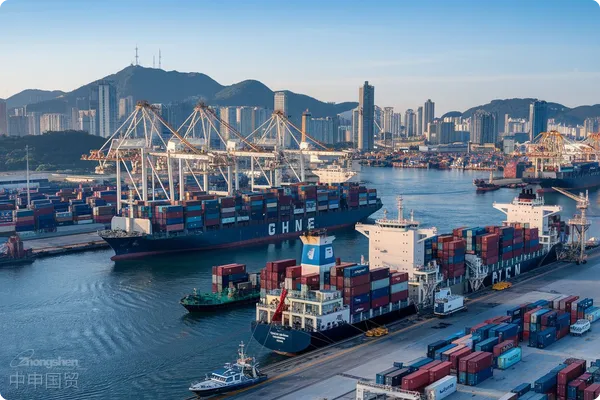- Shanghai Zhongshen International Trade Co., Ltd. - Two decades of trade agency expertise.
- Service Hotline: 139 1787 2118

Contents
ToggleIndustrialEquipment ImportsThe Process Black Hole and Breakthrough Strategies
The global import volume of industrial equipment is projected to exceed $380 billion in 2025, but customs data indicates that 23% of imported equipment experiences clearance delays. Professional agency services can reduce equipment delivery cycles by 40%, yet market research shows that 62% of enterprises lack systematic evaluation criteria when selecting agency services.
Key control points in import procedures
The typical import process for industrial equipment consists of five stages:
- Pre - preparation Stage
- Compliance verification of equipment technical parameters (CE/FCC certifications, etc.)
- The accuracy requirement for HS code pre-classification must be ≥98%.
- Transportation management phase
- Feasibility Verification of Over-Dimensional Equipment Transportation Plan
- Control of Error Rate in Hazardous Materials Classification and Identification
A case study of an automotive parts manufacturer demonstrated that by utilizing the HS code pre-classification service provided by the agency, the demurrage costs originally incurred due to misclassification were reduced from $120,000 to zero, while the customs clearance time for the equipment was shortened by 8 working days.
Common Risks and Countermeasures
- The import of electromechanical equipment is restricted by numerous domestic and foreign policies and regulations. Domestic industrial policies may restrict or encourage the import of certain electromechanical equipment, and foreign export control policies may also affect the supply of equipment. For example, some developed countries may have control measures for the export of high - end technology equipment. The agency company needs to pay close attention to changes in policies and regulations and establish a sound policy and regulation interpretation mechanism. They can adjust their business strategies in a timely manner through participating in industry seminars, maintaining communication with government departments, etc., to ensure the legality and smooth progress of import business.: A batch of EU-imported machine tools was entirely returned due to the expiration of their CE certification, resulting in a loss of $850,000.
- Logistics management risk: The ultra-large reactor was transported without filing a special route, resulting in a $200,000 fine.
- Technical standard risk: The voltage standard of the American-made testing equipment does not comply, rendering it unusable.
- Fund Security Risks:L/CLoopholes in the terms resulted in a 30% loss of the advance payment.
Professional agency companies should provide:
- Policy Early Warning System (Update Frequency ≤24 Hours)
- Alternative Transportation Solutions Database (covering 90% of special equipment)
- Technical Parameters Dual Verification Mechanism
Four-Dimensional Evaluation System for Proxy Service Selection
- Industry experience level: Operation cases for specific equipment categories ≥50.
- Service network density: Coverage rate of cooperative warehouses at destination ports >80%
- Risk control system: A three-level emergency response mechanism must be included.
- Service transparency: Essential Visual Tracking System for Critical Nodes
Comparative experimental data shows that enterprises adopting the four-dimensional evaluation system for selecting agency services experience a 67% reduction in the probability of import cost overruns and an increase in on-time equipment delivery rate to 92%.
Exploration of New Cooperation Models
Leading agency companies have launchedRisk-sharing service, the compensation ratio for customs clearance delays was increased to 0.15% per day. After adopting this model, a semiconductor company reduced its annual logistics costs by 18% and received $350,000 in compensation for delays.
When selecting industrial equipment,Import RepresentationAt this time, enterprises should establish a calculation model based on the total life cycle cost, keeping the agency fee ratio within 3-5% of the total cost, with a focus on controlling hidden costs. The value-added benefits brought by professional agency services are typically 6-8 times the service fees, and this value differential is particularly significant in the fields of precision equipment and special equipment.
Related Recommendations
? 2025. All Rights Reserved. Shanghai ICP No. 2023007705-2  PSB Record: Shanghai No.31011502009912
PSB Record: Shanghai No.31011502009912










